
Review on Fenlink Internal Hard Drive Converter by Jordan Epps

Reliable, top-of-the-line hard drive adapter
materials. It actually seems to be of a higher quality than some of the iMacs in terms of ports chosen by Apple, which tend to be very fragile. I have an i7 iMac 27" Late 2010 and an i7 iMac 27" Late 2018. As the Late 2010 iMac is more detailed it is much easier to work with and this was used to record a 960GB SSD plus an additional traditional laptop size 2 Terrabte hard drive instead of a floppy drive. While the 2010 iMac doesn't support the highest SATA transfer rates, the overall speed increase is phenomenal. Boot time is 20 seconds, and apart from loading complex audio plugins into GarageBand when you first launch the program, the latest supported version of Logic Pro for OSX High Sierra boots in 8 seconds. Compared to the 2018 iMac, which takes 3.5 seconds to load Logic Pro and 10 seconds to boot a clean install of OSX Catalina, the 2010 iMac's boot time is impressive. An iMac is required to install the Fenlink SSD/HDD adapter. a repair kit with double suction cups to remove the protective glass frame, and a PC screwdriver set with a torx screwdriver set to unscrew the LCD panel. Once you have done this, you must be very careful when removing very short cables such as the V-sync cable and LED backlight cable, as well as the LCD monitor and temperature sensor cables, which must be removed completely. Remove the LCD screen from the iMac logic board. The environment must also be sufficiently sterile and free of static electricity to prevent dust from getting onto the glass that protects the iMac's LCD panel. For those unfamiliar with building or repairing computers, it's not just replacing or adding a hard drive to a tower computer or building an HTPC. You need a full OSX Time Machine backup or an external drive with the latest supported OSX version, which can be installed when you start your iMac with a new hard drive. internal temperature sensors. After removing the original iMac hard drive, the original sensor cable will not work with the new SSD because the additional sensor connector is missing on the new non-Apple hard drive. If you added an SSD after installing a clean copy of OSX, you'll see an insane speed boost, but soon after, you'll hear a very loud, constant fan noise. Apple generally likes to run all of its computers at high temperatures since they are so thin. This means that both Intel MacBook Pros and iMacs typically don't allow the processor's clock speed to be increased. This issue has been well documented and was even present in the first version of their extremely expensive 2019 MacBook Pro i9. Standard temperatures were so high that the i9's processor was throttled to the point where it ran much slower than the much cheaper MacBook Pro i7 model, which was slightly under specs. To solve the problem of noisy fans when your SSD or traditional hard drive is installed on an older iMac, all you have to do is buy the relatively cheap HDD Fan Control app. Since I replaced the original hard drive and floppy drive, none of the temperature sensor cables work. HDD Fan Control can read all internal sensors of SSDs and traditional hard drives and actually has an enabled profile to prevent thermal throttling. Previously, the iMac with the original iMac 2010 hard drive with a clean install of High Sierra in a well-ventilated area with no dust inside the iMac reached 65 degrees Celsius in standby mode. With Photoshop, iTunes and Firefox open, temperatures sometimes exceeded 95 degrees Celsius. After installing the two new hard drives and using the HDD Fan Control, the iMac is still very quiet with an average of 44 degrees Celsius when idling and 60 degrees Celsius under load. Even with high CPU load, the internal fans are barely audible. On my 2018 iMac without modifications and hard drive fan controls, the temperature is around 50 degrees Celsius when idle and 80 degrees or more under load, mainly because the case is very thin in comparison. My 5.5GHz i7-9700k Nvidia 2080 Super PC build runs at 22 degrees Celsius idle and 55 under load, so the Mac's high temperatures are actually far from ideal. Oddly enough, upgrading the RAM to 32GB that a 27-inch late 2010 iMac can hold despite being limited to 16GB, adding an SSD and another hard drive configured for iTunes and Logic Pro sound libraries is, as well as a cache for Photoshop and music programs, and then with HDD Fan Control the iMac runs almost as fast as the 2018 iMac. Bottom Line: If you know what you're doing and are comfortable working on a Mac or PC, the Fenlink SSD/Hard Drive Adapter is incredibly high quality with durable materials and a metal body. The installation breathed new life into my iMac.
- Superior performance: SATA III standard supports a theoretical top speed of 6 Gb/s and backwards compatibility with SATA I/II
- Some small things
New products
Comments (0)
Top products in 💽 Hard Drive Accessories
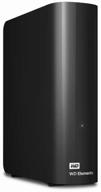
10 TB External HDD Western Digital WD Elements Desktop, USB 3.0, black

17 Review
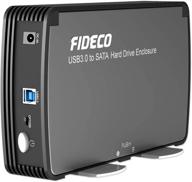
📦 FIDECO 3.5/2.5-Inch Hard Drive Enclosure Case with Fan, USB 3.0 to SATA Adapter for HDD & SSD External Hard Drive - Supports 16TB with UASP

12 Review

External sound card Focusrite Scarlett 2i2 3rd Gen

16 Review
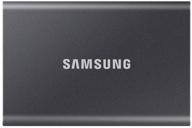
1 TB External SSD Samsung T7, USB 3.2 Gen 2 Type-C, grey

15 Review
Another interesting products
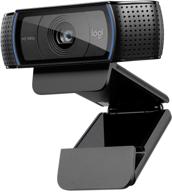
💻 Get Amazing Video Quality with Logitech HD Pro Webcam C920 (Discontinued Edition)

83 Review
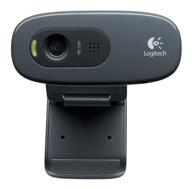
Logitech HD Webcam C270: Crisp 720p Widescreen Video Calling & Recording (960-000694), Lightweight and Portable at 3.15 lb.

192 Review

Renewed Logitech G PRO X Wireless Lightspeed Gaming Headset with Blue VO!CE Mic Filter for Immersive Gaming Experience

122 Review

Smartphone Samsung Galaxy A50 4/64 GB, 2 SIM, black

82 Review

